In 2002, Oenologue, Sébastien Thépénie responded to an ad to work at a winery in French Polynesia. Wait a minute. There is vineyard and a winery in the middle of the South Pacific Ocean? The answer is yes – on the remote Rangiroa atoll, one of the world’s largest coral atolls. And certainly one of the most isolated vineyards on the planet. Today Sébastien oversees the viticulture and winemaking for Domaine Vin de Tahiti.
This extremely unique vineyard is the vision of French businessman Dominique Auroy whose early vineyard experimentation in French Polynesia dates back to 1991. After growing grapes on several sites, Rangiroa was chosen for its relative lack of plant disease, insects and somewhat proximity to Tahiti.
Remarkably the owner of our pension used to work in this vineyard and was able to bring us to the property in his boat for a private tour. The vineyard is on flat land – a very short walk from the lagoon side with its stunning aquamarine waters – and only slightly further from the other side of the island next to the open ocean. During a visit we heard motorboats passing by while standing in parts of the vineyard. It is an odd feeling to spend time among the vines and then walk a short distance to be in coconut palms overlooking a coral beach next to beautiful tropical waters.
The own-rooted organically farmed vines grow in limestone and coral soils – according to Sébastien the most challenging aspect of growing this vineyard has been working with the terroir. One thinks of coral as being uniform but in reality there are different types and sizes of coral – including those found within the vineyard. Initially about 100 varieties of wine grapes were planted – today whittled down to only three grapes, Carignan, Grenache and Italia, a cross of Bican and Muscat Hamburg (some of the original vines planted in 1997 are still growing). Their first harvest was a very tiny production in 1999.
The soils are not deep, only a meter in certain blocks – according to head viticulturist, Jacqueline Tuairau who we first met while she was on the tractor mowing the grass between the rows. She is a local who began working at Domaine Vin de Tahiti in 2000. And over the years, the organic material has significantly increased in the soils due to the team’s vigilant efforts to enhance the vineyard with natural composts (including mulching cuttings from the vines and adding nutrients from other plants grown next to the vineyard). Some of the problems the vineyard faces are powdery mildew and spider infestations. The vineyard is about 15 acres.
Water for the vines is collected in a holding pond and using solar power is then pumped to an above ground tank.
Approximately two harvests are conducted each year (every 5 to 5.5 months), however, not all the grapes are picked at once. Unlike most vineyards in parts of the world that experience distinctive seasons – the vines here never naturally become dormant and lose their leaves. Rather they are pruned after the grapes have been harvested (while the vines are full of green leaves) which puts them into a very short dormancy. But not all the vines are pruned at once so there are always vines covered in leaves. Timing on pruning is equally as important as timing of their harvest.
Once the grapes are picked they make the trip across part of the lagoon in an open air motorized boat (taking about 10 minutes between islands depending on condition of the seas and winds), passing over stunning aquamarine waters to the winery where they are then fermented. Once the wines are finished aging, they are then transported to the island of Tahiti by ship (takes about 2 days) where they are then bottled, refrigerated and readied for distribution (their export market is primarily to select countries within Europe).
The winery is located near the village of Avatoru on Rangiroa (the neighboring island across from the motu containing the vineyard) – and is open once a day from Monday through Saturday at 5pm and includes several introductory films and a quick tour + tasting (allow about an hour). Four wines are produced – three dry and one off dry. All are balanced, easy drinking and are texturally friendly on the palate. No red wines are made. Reservations are not needed although they are recommended. And tours are conducted in French and English.
And in a much newer offering, the winery also produces rum – from a tiny planting of 8 varieties of sugarcane, near the vineyard. Besides a taste of each of their four wines, each tour and tasting includes samples of the rum. For more information see: www.vindetahiti.com
Winery
Vineyard


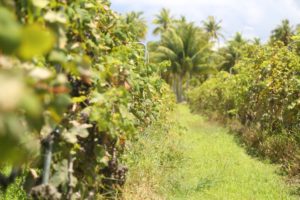
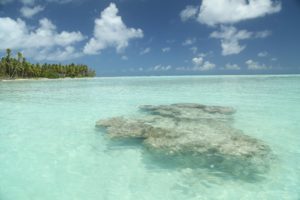

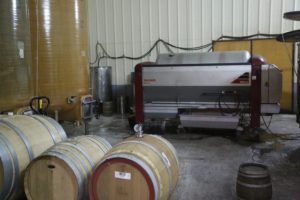


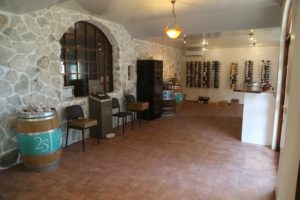

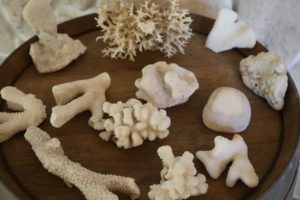
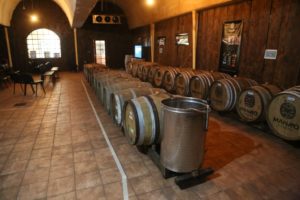
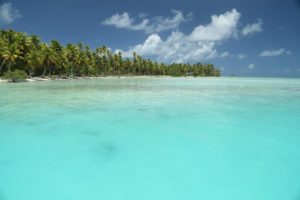
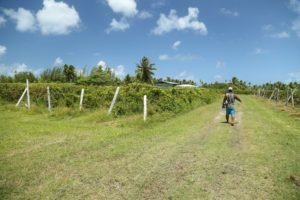
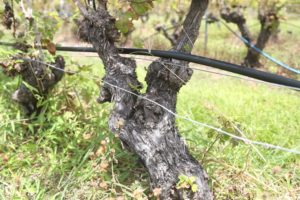
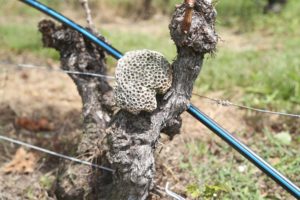
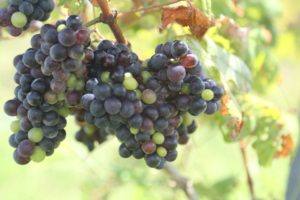
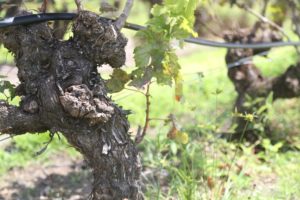
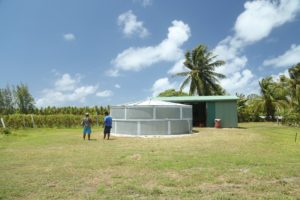


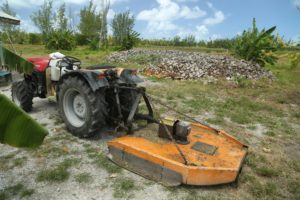

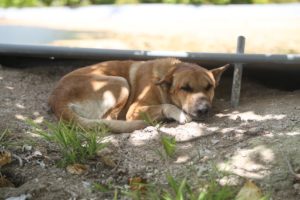


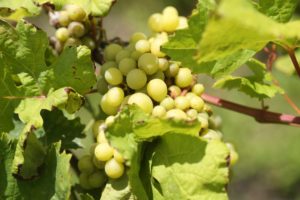


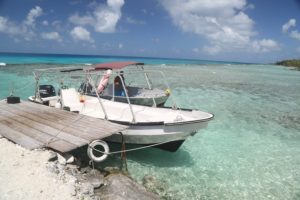
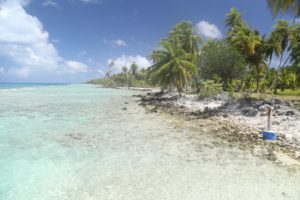
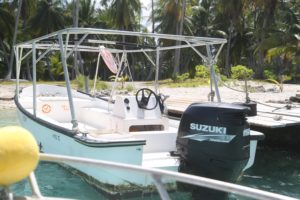
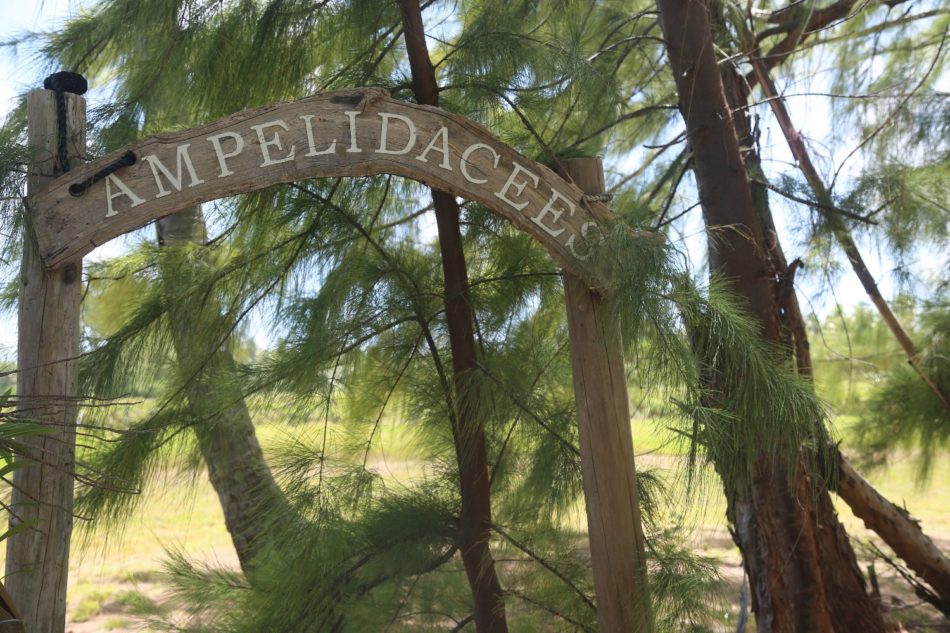
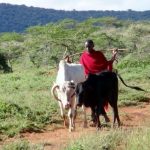





People visit French Polynesia for beaches, and wow winery in the middle of Pacific Ocean?!! It’s really eye opening!
Yes, I was quite surprised when I first heard about this remote winery with vines growing directly in coral!